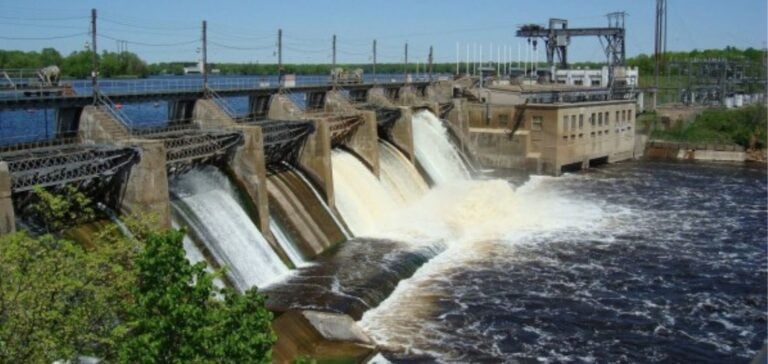The dam modernization projects underway in Minnesota illustrate a significant initiative to strengthen the region’s energy infrastructure.
These efforts are part of a broader effort to upgrade hydroelectric facilities in the United States, in response to growing needs for resilience and energy efficiency.
The modernization of Scanlon and Blanchard dams represents a crucial step in ensuring reliable and sustainable energy production, while meeting the challenges posed by climate change and extreme weather events.
The Scanlon dam, located on the St. Louis River, is a project designed to improve the efficiency of the St. Louis River.
Louis River, is a project to replace aging equipment, including gates and winches that are over 100 years old.
With a capacity of 1.6 megawatts, this dam requires an investment of $3 million, of which $1.21 million comes from specific modernization funding.
The main objective of this project is to improve spillway capacity during high-flow events, which is essential for long-term operational safety and reliability.
Barrage Blanchard modernization
Blanchard Dam, located near Royalton on the Mississippi River, has a much larger capacity of 18 megawatts.
The renovation project, which will begin in January 2026 and span two years, involves a total cost of $6.4 million.
Funding of $1.9 million is earmarked for the renovation and rewinding of one of the three generators, as well as the installation of new equipment.
These improvements are designed to optimize energy production and ensure efficient operation in the face of growing power grid requirements.
These modernization projects are part of the “Maintaining and Enhancing Hydroelectricity Incentives” program of the bipartisan Infrastructure Act.
This program aims to strengthen the resilience of the American power grid and modernize hydroelectric infrastructure.
By improving dam safety, these initiatives help ensure more efficient and reliable hydroelectric power generation, essential to meeting future energy needs.
Minnesota Power Energy Transition
Minnesota Power, an Allete subsidiary, is playing a key role in this energy transition. The company plans to retire its last two coal-fired units at the Boswell Energy Center by 2030 and 2035, relying more heavily on its hydroelectric system of 11 stations totaling 120 MW.
Funding for dam modernization projects will help mitigate costs and limit the rate impact for customers during this transition.
This underscores Minnesota Power’s commitment to moving toward more sustainable energy sources while maintaining price stability for its consumers.
Since the passage of the Infrastructure Act in 2021, Minnesota Power and its parent company Allete have received significant federal funding to modernize their infrastructure.
These include a $700 million grant for a transmission line between North Dakota and Montana, as well as $50 million to modernize a high-voltage DC transmission line connecting North Dakota to Hermantown, Minnesota.
These investments are essential to support the transition to cleaner, more reliable energy.
Importance of Hydroelectric Investments
Investments in hydroelectric infrastructure, such as those made by Minnesota Power, are crucial to achieving the Biden administration’s energy goals.
Jennifer Granholm, U.S. Secretary of Energy, points out that these projects will help modernize existing facilities and protect thousands of jobs.
By strengthening the U.S. hydropower fleet, these initiatives contribute not only to the energy transition, but also to the creation of a more stable and sustainable economic environment.
The importance of these projects is not limited to energy production.
They also play a key role in national energy security, by diversifying energy sources and reducing dependence on fossil fuels.
By modernizing hydroelectric infrastructures, companies like Minnesota Power ensure that they can meet growing energy needs while respecting environmental commitments.
The Scanlon and Blanchard dam modernization projects represent a significant step forward for hydropower in Minnesota.
By investing in these infrastructures, the state is committed to ensuring reliable, sustainable energy production, while supporting the transition to cleaner energy sources.
These initiatives demonstrate our determination to meet today’s energy challenges while preserving the safety and resilience of the power grid.






















